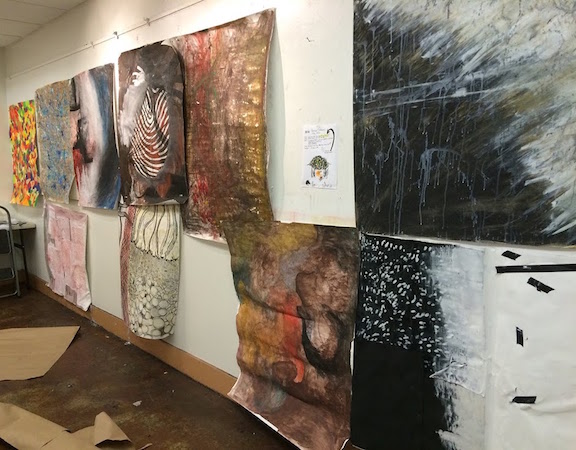
Yasumassa Morimura, Red Hair Ornament, 2001
Frida Kahlo was, by many accounts, a woman of unique beauty. Yasumasa Morimura, as revealed in his many cross-dressing photo projects, is not. Kahlo was the Mexican painter famed for her impassioned if tortured life captured in many self-portraits before her death in 1954. Osaka-based artist Morimura has been creating self-portraits by insinuating his face into famous artworks since 1985. More here.

John Williams, Oyster shell, acrylic bowl, wire, clay and overhead projector. Exhibition, The Mass Ornament, curated by John Rasmussen at Gladstone Gallery. Link here.

Ornament extends Anne MacDonald's investigation into the metaphorical relationship between photography and death. The connection with death, through the camera's arbitrary cut into the continuum of time to form an image, is broadened in these recent works by the artist's subject matter - porcelain flowers and tin leaves placed on graves from the Victorian era. The photographic object, like the porcelain flower, may arrest time but in truth merely delays the inevitable. More here.

During her life as a painter Prunella constantly made graphic images in etching, screen-printing or lithography. She first came to The Curwen Studio in 1959 to work at the suggestion of Timothy Simon and these images originated on the use of transfer paper – a method she continued to use for the rest of her life. More here.

American Academy in Rome. More images here.
 Article, "Ornament as Art", link here.
Article, "Ornament as Art", link here.
Art and Bikes


Baroque Death Star

Zena Holloway

As modernism took hold in the early years of the twentieth century, designers began to view ornament as unnecessary and even morally offensive to modern industrial production. Increasingly they shunned decoration in favor of rational, austere designs that were devoid of extraneous embellishment. Despite their criticism, however, ornament was never entirely exorcised from consumer culture, and by the late 1950s designers were returning to an informed discussion about ornament and its symbolic value. Architect Robert Venturi wrote influentially in the 1960s about ornament as symbol, and in the late 1970s and 1980s figures associated with the design group Memphis, among others, reveled in the use of abstract surface patterns to clad buildings and to decorate furniture and decorative arts. More here.

Musical Instrument, Museum of Fine Arts, Boston

Emerging Landscape

No comments:
Post a Comment